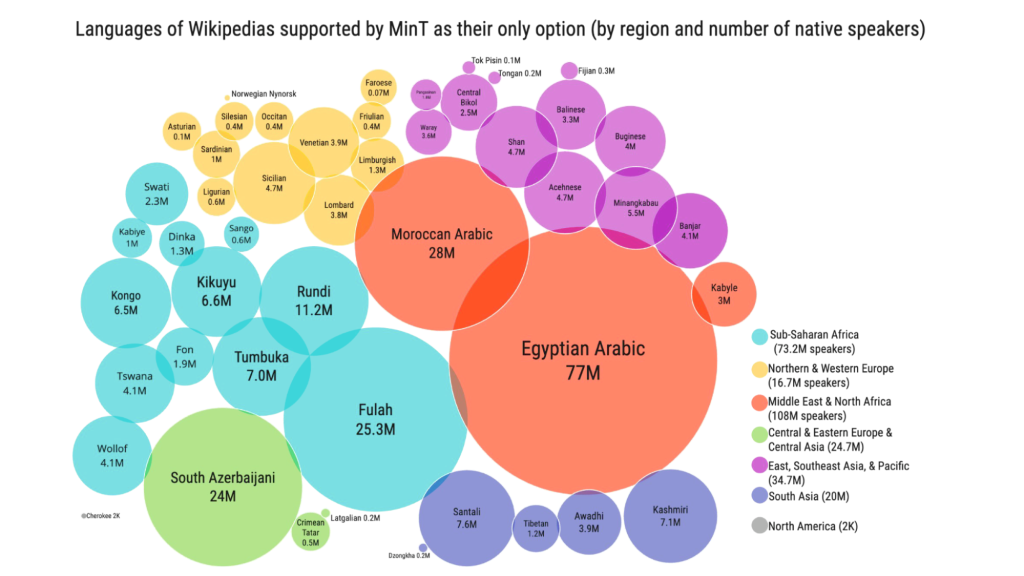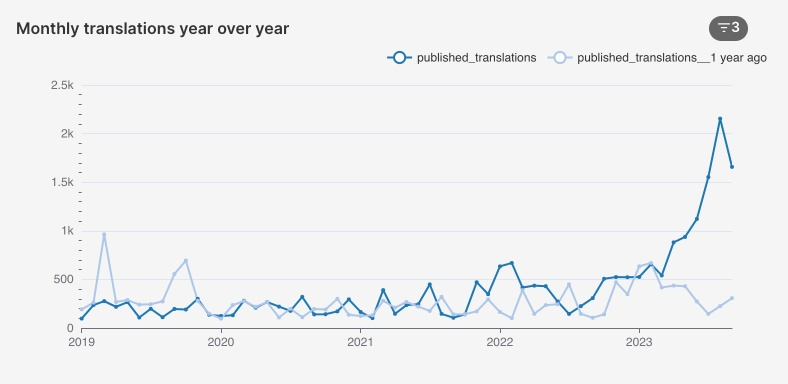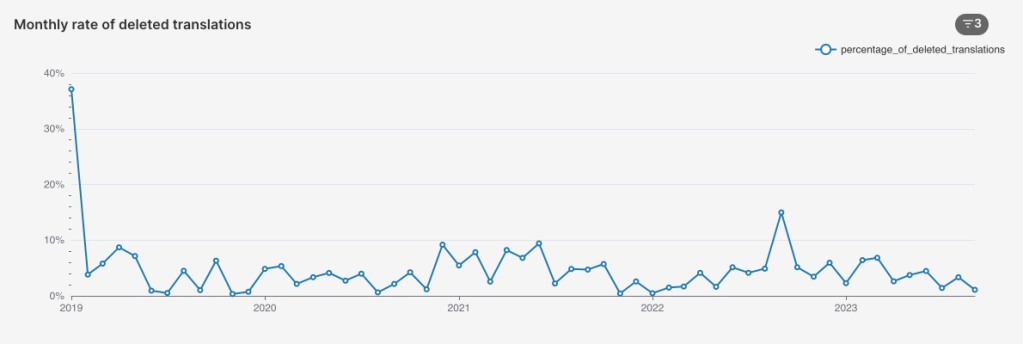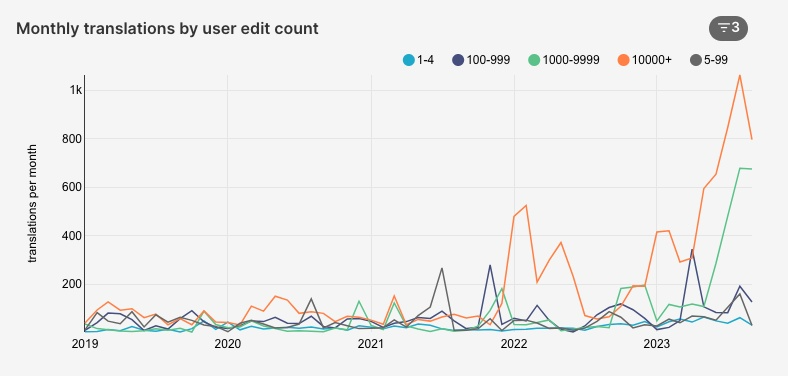
Did you know that the Wikimedia Foundation’s Machine in Translation (MinT) service supports the translation of 40,216 language pairs? This means people can translate content written in a common language into about 206 unique other languages supported by MinT and vice-versa. This extensive language support has increased translation numbers, and articles that were created using MinT have an impressively low deletion rate, clearly indicating the value MinT brings. It’s no wonder that it has become the second most utilized translation service in Wikipedia in just a short span of a few months.
In June 2023, the Wikimedia Foundation’s Language team introduced MinT, a groundbreaking language translation tool. This service enhances translation capabilities within the Content and Section translation tools, which allows editors to create translations right next to the original article and automates the boring steps of copying text across browser tabs, looking for corresponding links and categories, etc. MinT, hosted on Wikimedia Foundation’s infrastructure, harnesses the power of open-source neural machine translation technology. It not only simplifies the process of translating Wikimedia content into various languages but also extends its support to languages that are often overlooked by other translation services. MinT operates by utilizing open-source translation models released by various organizations. Presently, it incorporates translation models from four different organizations. You can discover more about the service here.
With this infrastructure, MinT can generate initial translations of a Wikipedia article (source content) from multiple open-source translation models available in the target language for people using the Content and Section translation tool. The above draws us closer to having the sum of all knowledge across numerous Wikipedia language versions. Furthermore, individuals and organizations can harness this open-machine translation for their specific translation needs.
This translation service has increased the productivity level of translators in 55 language Wikipedias that are receiving machine translation service support for the first time; discover MinT’s impact below.
Translations data before and after MinT
From users’ getting a translation support service for the first time standpoint, MinT is making a positive impact on their work. Let’s explore what the data reveals through our analytics dashboard:
Data shows a remarkable shift in monthly translation numbers. In the past, monthly translation activities rarely reached 500. However, in recent months following the introduction of MinT, we’ve consistently seen over 1,000 published translations, with a peak of 2,150 in August. Comparing this August to the previous year’s August, which had only 225 published translations..

The deletion rate typically increases with high translation activity or spikes as a first indication of poor quality translation or the translation tool’s misuse (which can be done in good faith by inexperienced users). In this case, as we can see in the graph below, the increase in translation activity after MinT did not increase the monthly deletion rate.

The experience level of the translators, indicated below based on edit counts shows that most of the translations are the handiwork of users with over 1000 edits (green line in graph below) and 10000+ edits (orange line in graph below) in their edit counts.

In the context of overall machine translation usage between August and September 2023, MinT did not hold the top position. However, it demonstrated its significance by facilitating 3634 translations in the content and section translation tool, being the second most-used machine translation support service. So far, our data supports users feedback that MinT is a valuable service in Wikipedia.
What next with MinT
The WMF Language team has broadened its service to the Translate Extension, by offering a “translation suggestion” service to contributors like 511KeV, who participated in completing the translation of the Kashmiri Wikipedia interface and those who translate the multilingual pages across our platforms, such as translatewiki.net, Wikimedia MetaWiki, and MediaWiki. The expansion comes with new challenges, like supporting the translation of contents with Wikitext and other markup on top of the plain-text models without the markups affecting or mishandling the translations.
Furthermore, the team is actively exploring the use of MinT beyond the confines of the Wikimedia movement, reaching out to contributors and Wikipedia readers seeking access to content in various languages and possibly exposing the API as an infrastructure to other communities. The above capabilities will bring us closer to a global society, sharing the collective wealth of knowledge.
You can keep track of the WMF Language team’s plans for the MinT translation on this page and be notified of recent happenings by subscribing to the Language team’s quarterly newsletter. If you have questions about MinT, don’t hesitate to ask on the project talk page.
We’ll publish a second blog post in a few days where we hear from Wikimedia editors and their experience using the service.

Can you help us translate this article?
In order for this article to reach as many people as possible we would like your help. Can you translate this article to get the message out?
Start translation